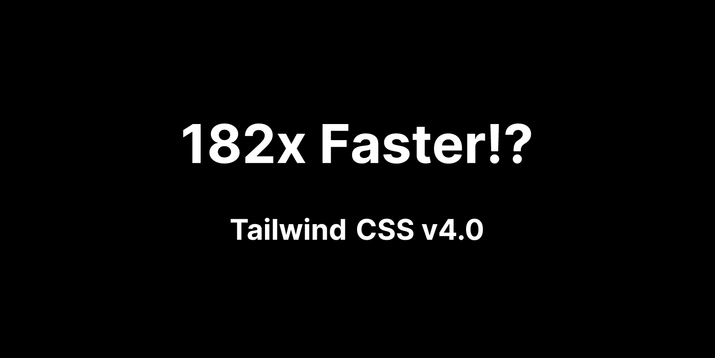Tailwind CSS v4.0: What Developers Need to Know

Table of Contents
- Breakthrough Performance
- Modern CSS Integration
- Simplified Workflow
- Potential Considerations
- The Verdict
- Resources
Breakthrough Performance
1. Rust-Powered Speed
The new engine delivers:
- 3.78x faster full builds (378ms → 100ms)
- 8.8x faster incremental builds with CSS changes (44ms → 5ms)
- 182x faster no-change rebuilds (35ms → 192µs)
These microsecond-level rebuilds mean near-instant HMR during development.
2. First-Class Vite Support
The official @tailwindcss/vite plugin eliminates PostCSS dependencies while improving integration:
import tailwindcss from "@tailwindcss/vite";
export default defineConfig({ plugins: [tailwindcss()],});Modern CSS Integration
1. CSS-First Configuration
No more tailwind.config.js. You can now configure directly in CSS:
@import "tailwindcss";
@theme {--font-display: "Satoshi", sans-serif;--breakpoint-3xl: 1920px;--color-avocado-500: oklch(0.84 0.18 117.33);}2. Native CSS Variables
All design tokens become CSS custom properties automatically:
:root {--color-avocado-500: oklch(0.84 0.18 117.33);--ease-fluid: cubic-bezier(0.3, 0, 0, 1);}3. Cutting-Edge Features
- Container queries
- 3D transform utilities
color-mix()for alpha adjustments@starting-stylefor JS-free transitions
Simplified Workflow
1. Zero Configuration
- Automatic content detection (no content array)
- Built-in
@importhandling (no PostCSS plugins) - Single CSS import:
@import "tailwindcss"; /* replaces @tailwind directives */2. Smart Defaults
- Ignores
.gitignorepatterns automatically - Filters binary files by default
- Extend with
@sourcedirectives:
@source "../node_modules/@custom/ui-lib";3. Dynamic Utilities
- Arbitrary grid columns:
grid-cols-15 - Data attribute variants:
data-current:opacity-100 - Spacing scale derivation:
.mt-8 { margin-top: calc(var(--spacing) * 8); }Potential Considerations
1. Rust Engine Maturity
While fast, the team notes it’s still experimental. Early adopters might encounter:
- HMR quirks in non-Vite setups
- Learning curve for CSS-first configuration
2. Migration Effort
The automated upgrade tool helps, but:
- Existing PostCSS configurations need adjustment
- Theme customization requires CSS variable adoption
3. Modern Browser Focus
Features like color-mix() and CSS layers have limited IE/legacy support.
The Verdict
Tailwind CSS v4.0 delivers on its promise of modern CSS integration and transformative performance. While the Rust engine needs real-world testing, the 182x faster no-change rebuilds alone justify exploration.
Start fresh with:
npm install tailwindcss@nextExisting projects: Use the official upgrade guide and automated migration tool.
Resources
All data and features referenced come directly from the official Tailwind CSS v4.0 announcement:

![Current state of front-end frameworks [Mid 2022]](/_astro/front_end_frameworks_bf4c363453.DovaEKR5_Z1LALBy.webp)